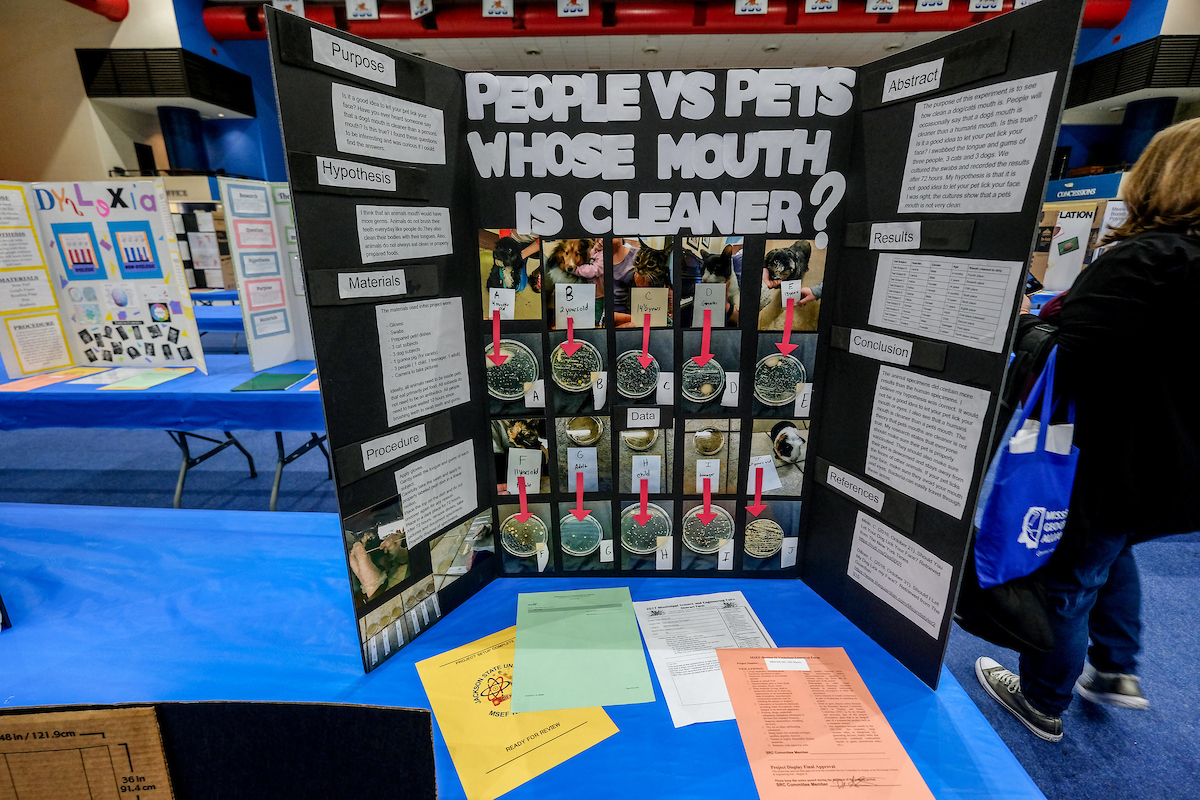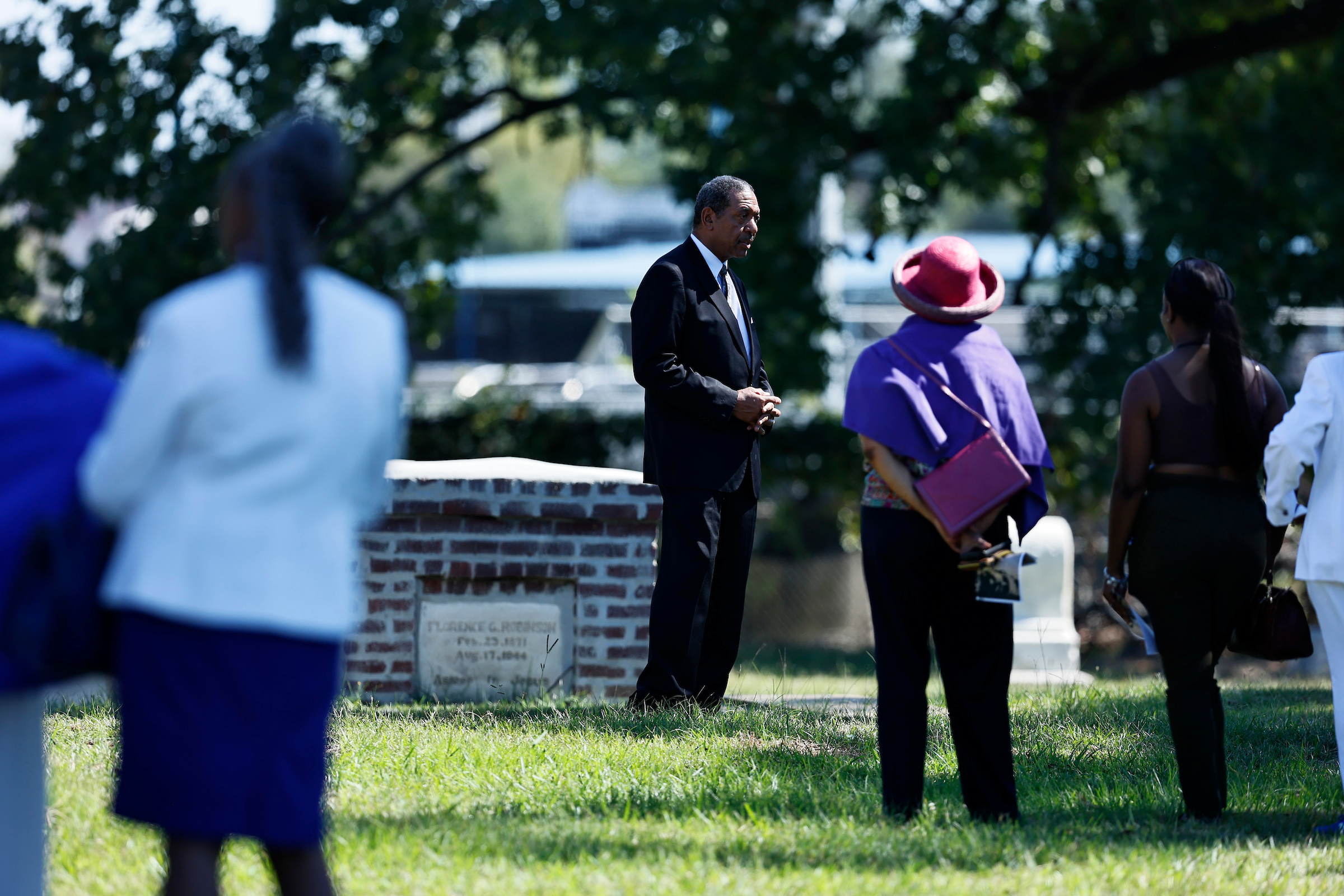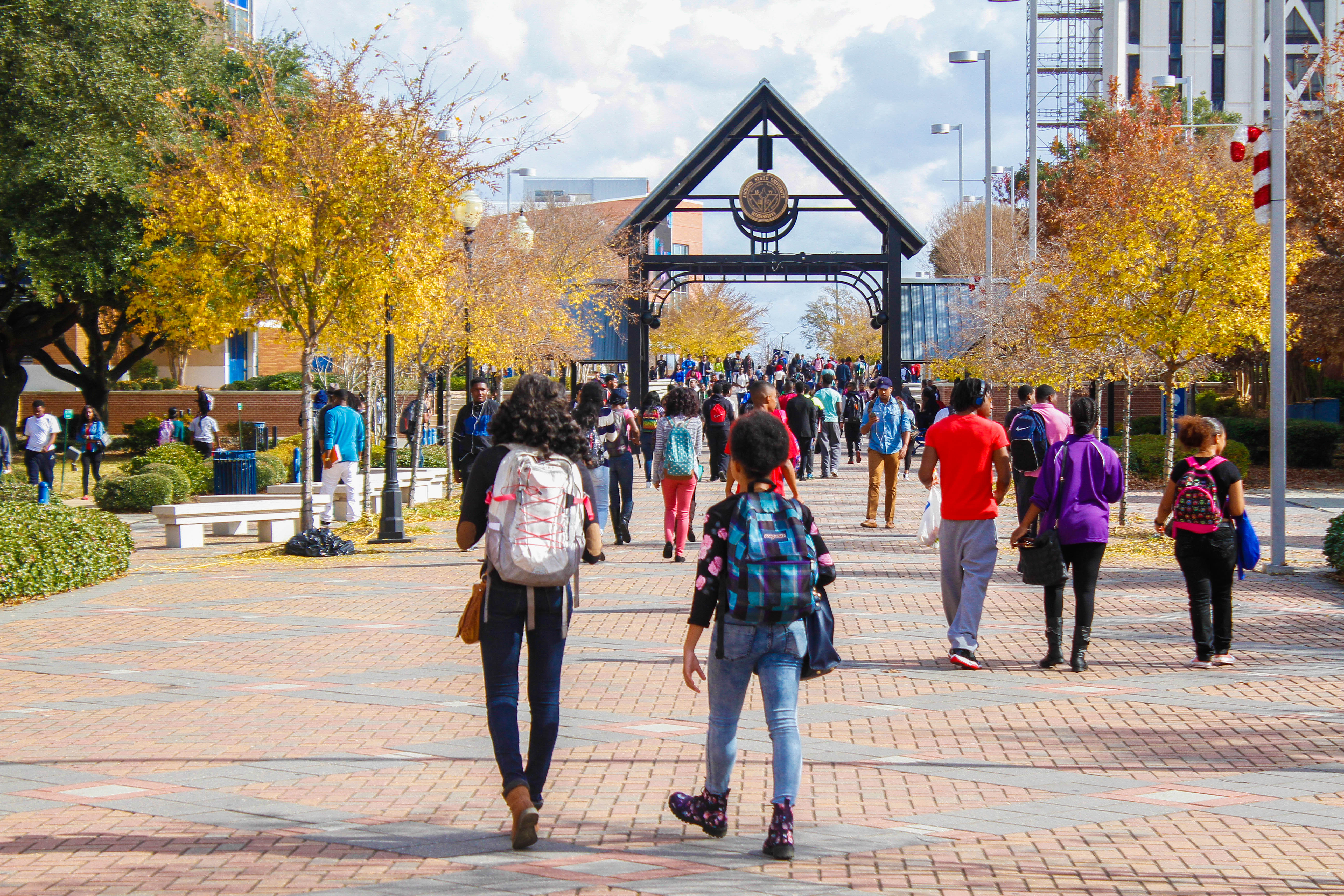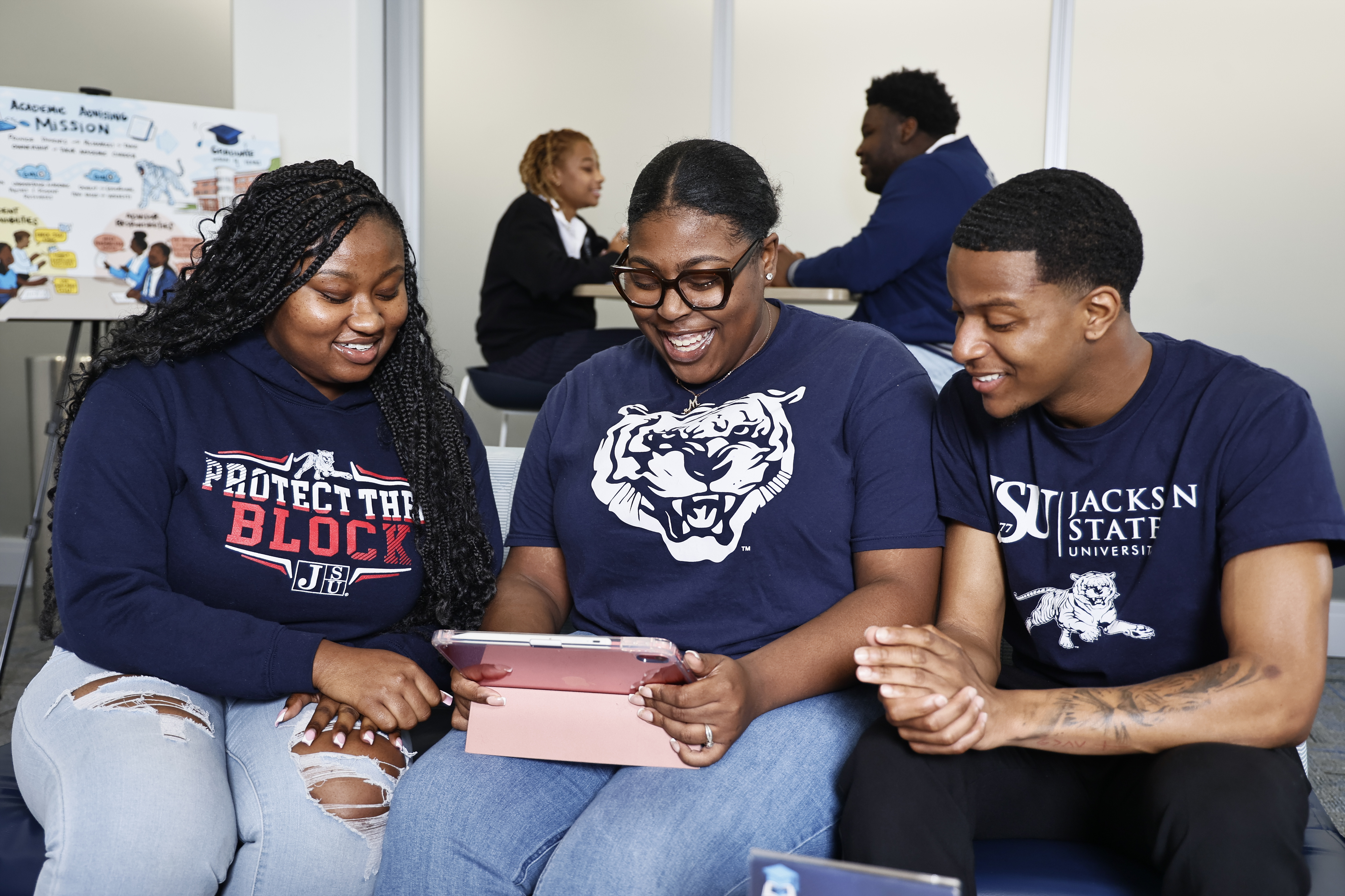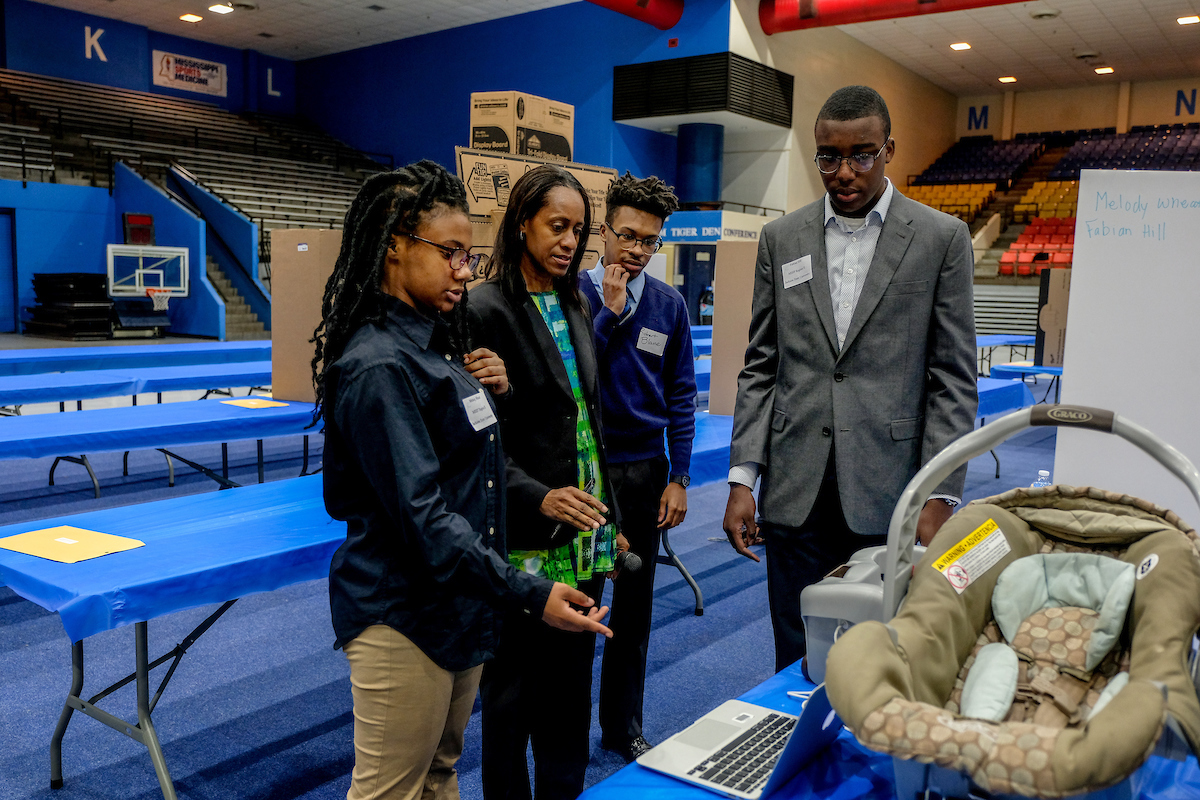
![]()
[hr]JSU recently hosted 650 students from public and private schools from all grades during its 45th Region II Science Fair, which saw one group earn a first-place finish for a car seat that signals when children unbuckle themselves and are left in hot cars.
Dr. Jacqueline Stevens, a JSU biology professor in the College of Science, Engineering, Technology, coordinated the event. She described the gathering as an education venue for students to display their projects. The event was held March 22-23 inside the Lee E. Williams Athletics and Assembly Center.
Including Jackson, participants represented 25 schools from places such as Byram, Clinton, Northwest Rankin, Port Gibson and Vicksburg.
Stevens said, “Students put a lot of work into it and are always excited about coming to Jackson State. Some high school winners have been here before, and they come back to discuss their projects. Some may be on the cutting edge of future science. We may hear more about many of these students in years to come. They talk to judges about the purpose of their projects and get feedback on furthering their ideas.”
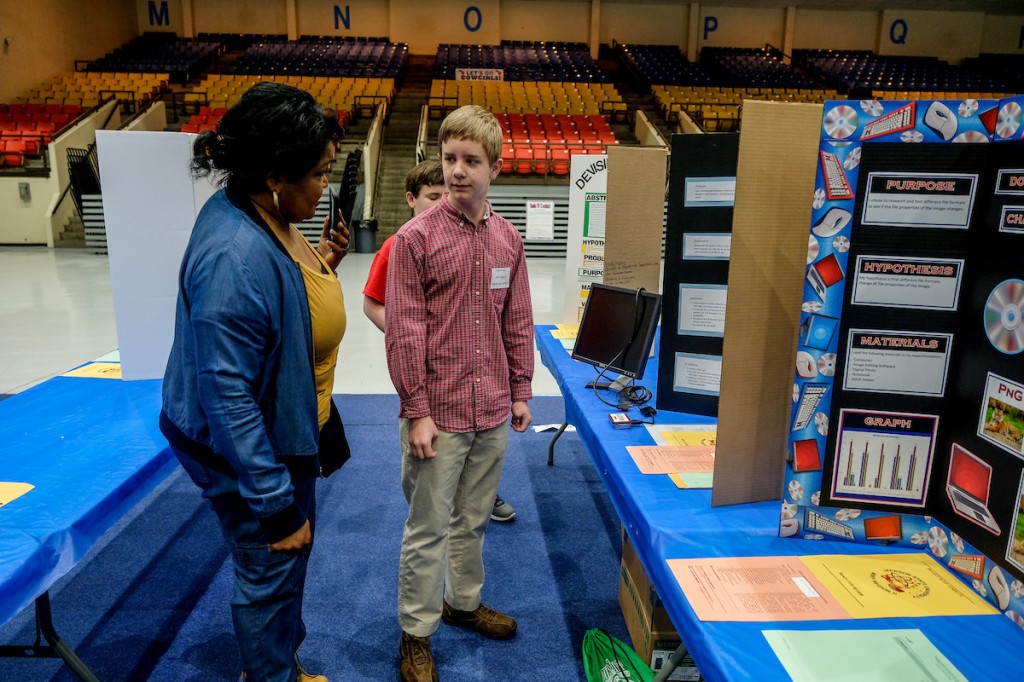
The first day of the event was for Grades 1-6 (450 students); and the second day was devoted to Grades 7-12 (200 students). Numerous awards were presented in several categories, and the event is an opportunity to earn scholarships.
The project that earned first place in the engineering category is called the Baby Beeper and was developed by Jim Hill High School students.
Its purpose is to help ensure parents that their child remains buckled in car seats certified by the National Highway Traffic Safety Administration. The seat alerts drivers if the belt is not securely fastened or if the belt becomes unbuckled while the vehicle is in motion. A light remains illuminated when the belt is secure.
Students say additional technology will send an emergency notification to cell phones when an unbuckled child moves a short distance away from the car seat. Furthermore, it will detect a change in weight in the car seat and include a temperature sensor.
Susan Bender, chair of the science department at Jim Hill School, accompanied 35 students to the fair.
“Science is the most important subject. It explains everything in the world; everything about our bodies; and everything about anything that could hurt us and can hurt the planet. If you don’t know science, then you don’t know enough to be able to make informed political and personal decisions about what goes on in your life and how the world can affect everyone else.”
Bender said the car safety seat project was a result of brainstorming between her and the students. “As the conversation progressed, you could see the light bulbs coming on in their heads. They would say, ‘We could do this; we can add this.’ This was a terrific way for students to be able to make a contribution to society.
Furthermore, she said, “So many people either forget their kids are in the car, and this safety seat will help prevent that. It informs you when the seat is properly buckled. So if the car is in an accident, heaven forbid, then the child won’t be ejected.” She said an unbuckled seatbelt would send a Bluetooth alert. “I can’t think of a better way to make a contribution to society than that.”
Participants represented several disciplines: botany, chemistry, physics, engineering and non-STEM areas such as psychology.
A number of other research projects were presented:
- How Extreme Temperatures Affect Sound
- Will Robots Become a Man’s New Best Friend
- Solar Energy vs. Electric Energy
- Can You Build a Car Powered by Air?
- How Does Friction Work?
- How Clean is Your Toothbrush?
- Are Fingerprints Inherited?
- The Mozart Effect: How Does Music Affect Your Brain When Thinking
Winning high school students have an opportunity to go to the upcoming State Science Fair on April 5 at JSU. The International Science Fair will be May 13-18 in Pittsburgh, Pennsylvania.
